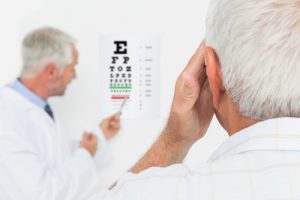 It’s truly alarming how so many people with diabetes – or at risk for diabetes – are unaware of the damage the condition can do to their eyes.
It’s truly alarming how so many people with diabetes – or at risk for diabetes – are unaware of the damage the condition can do to their eyes.
It’s serious. In fact, if you don’t get your eyes examined regularly, it can lead to complete blindness…
Diabetes and blindness: Making the connection
Advertisement
An estimated 25.8 million people in the United States have diabetes, according to the American Diabetes Association. More than 10 million are 65 years of age or older, so this is important information for seniors.
In recent years, diabetes has caused an average of 70,000 deaths a year and has been a contributor to another 160,000 annually.
Generally, type 2 diabetes makes up roughly 90 percent of these cases. It’s characterized by high blood glucose – or hyperglycemia – resulting from the body’s inability to produce or use enough insulin. Increased blood sugar levels can then lead to serious short-term and long-term health issues, including nerve and kidney damage, heart disease and, yes, even blindness.
Still, a recent poll by the Alliance for Eye and Vision Research revealed that only 30 percent of diabetics know about diabetic eye disease. What’s more, among Medicare beneficiaries diagnosed with age-related macular degeneration, glaucoma and diabetes – conditions that necessitate annual eye exams – three-quarters of those who weren’t tested over a five-year period were people living with diabetes.
You’ve got to protect your eyesight
Diabetic eye disease encompasses various diseases and conditions, and can cause blindness if left untreated.
The stats aren’t pretty either: For 28.5 percent of diabetics 40 years of age and older, diabetic retinopathy occurs when the small blood vessels in your eye swell, leak fluid or close off completely. This blocks blood from ever reaching the retina.
Interestingly, though, the disease doesn’t have any immediate symptoms. Treatment for diabetic retinopathy includes medical injections, laser surgery and vitrectomy surgery, where blood and scar tissue caused by abnormal blood vessels is removed.
Cataracts happen when your vision becomes blurry, cloudy or dim. Mild cataracts may be treated with straightforward eyeglasses, but if it’s advanced in any way, cataract surgery is needed. Here, the cloudy lens is first removed, then replaced with an artificial lens implant known as an intraocular lens or IOL.
Advertisement
Another threat is glaucoma, a disease that damages peripheral vision and the optic nerve. This typically is caused by elevated pressure in the eye. Like diabetic retinopathy, it seldom has any noticeable symptoms in its early stages. Glaucoma can lead to blindness if not operated on or treated with prescription eye drops.
When eye exams can save your vision
So how can diabetic eye disease be prevented in the first place, you ask? Well, the American Academy of Ophthalmology encourages people with type 2 diabetes to get a dilated eye exam at the time of their diagnosis and every year after. If you have type 1 diabetes, you should start getting an annual eye exam five years after your initial diagnosis.
Although it’s a lot to take in now, just remember: Aside from maintaining healthy blood glucose levels, having an annual dilated eye exam is the best thing you can do to prevent serious vision loss.
